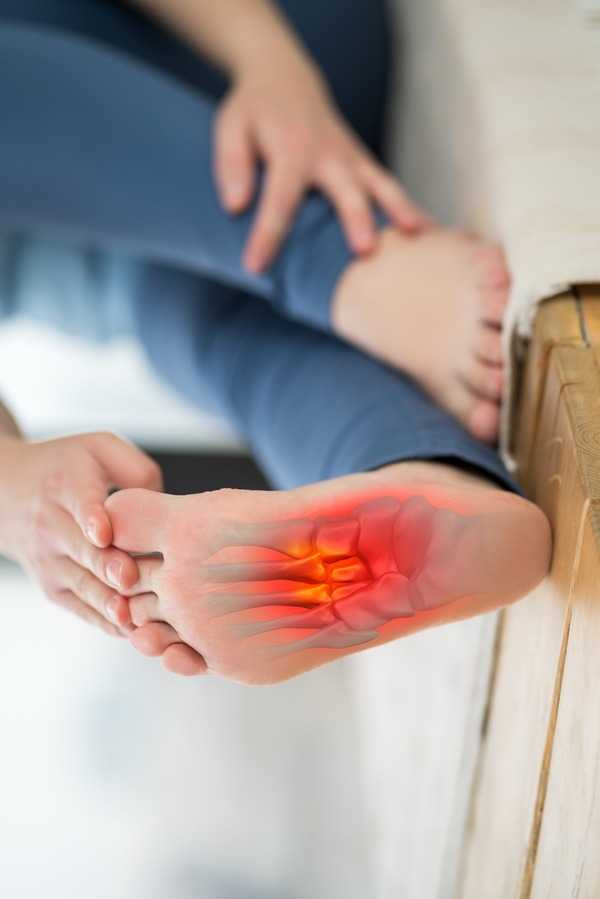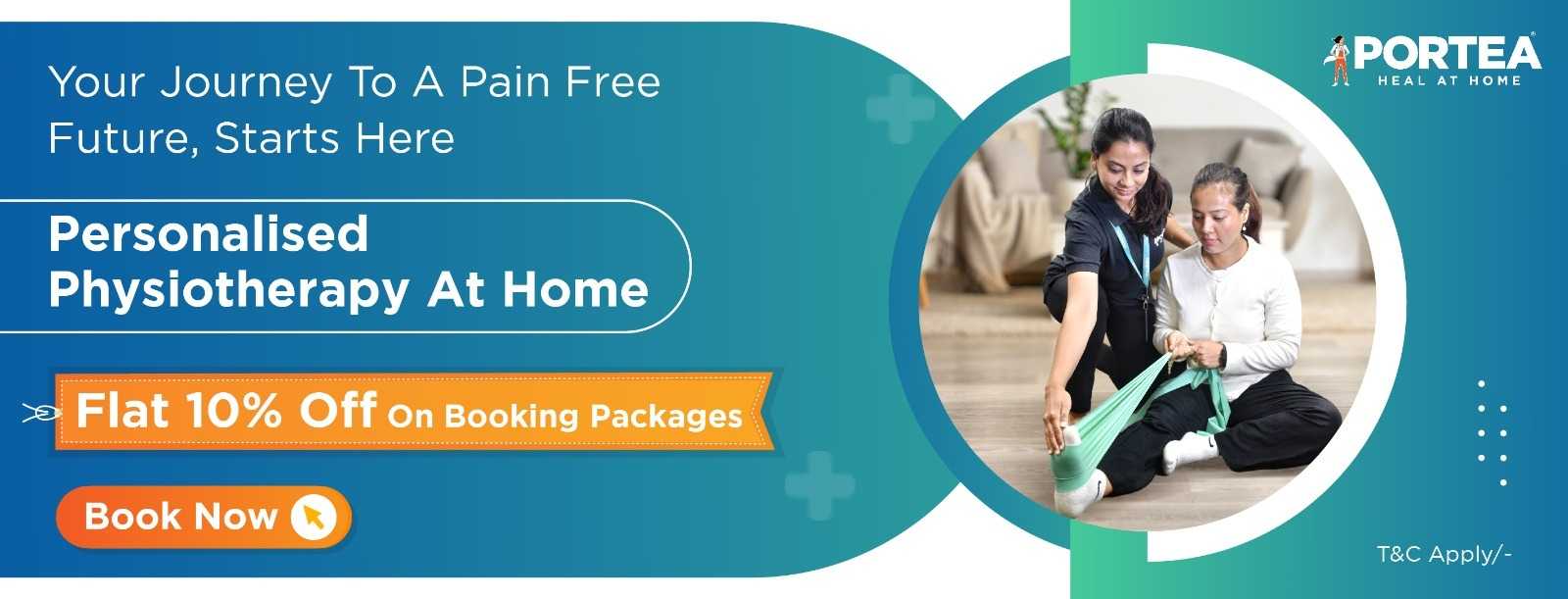
Expert Physiotherapy at Home
Certified physiotherapists visit you at home to provide focused, one-on-one care tailored to your needs. With no travel or waiting rooms, recovery happens in a setting that is comfortable, familiar, and built around your convenience.
Personalised Recovery Programmes
Every treatment plan is designed to suit your condition, goals, and pace. Our physiotherapists follow structured, evolving protocols to ensure consistent progress, with each session aligned to deliver meaningful results.
Trusted Physiotherapists. Real Results.
Our team comprises experienced, background-verified physiotherapists trusted by thousands of families. With a strong focus on safety, reliability, and clinical outcomes, we make recovery at home both effective and reassuring
Patient Testimonials
Portea Physiotherapists for Home Visits
Meet some of our experienced and dedicated healthcare professionals

Dr. Lokesh G
Physiotherapist
Specializations
Experienced in Neurological rehabilitation, Orthopaedic physiotherapy, and Paediatric care
Delivers structured, high-impact treatment plans across neuro, ortho, and paediatrics—ensuring safety, comfort, and measurable recovery at every stage.

Dr. Mohammed Sarwar
Physiotherapist
Specializations
Experienced in Neurological rehabilitation, Adult physiotherapy, and Paediatric care
Combines deep clinical expertise with a compassionate approach, supporting both adults and children through neuro and physical rehabilitation that promotes long-term independence and recovery.

Dr. Nelapati Divya
Physiotherapist
Specializations
Skilled in Orthopaedic rehabilitation, Manual therapy techniques, and Paediatric physiotherapy
Brings a personalised, hands-on approach to healing—combining structural expertise with paediatric sensitivity to restore movement, relieve pain, and improve everyday function.

Dr. Naveen V
Physiotherapist
Specializations
Trained in Pain management, Cardiac and Orthopaedic rehabilitation, Neurological care, and Neural tissue mobilisation
Brings clinical precision and empathy together—designing science-backed recovery protocols for pain relief, nerve mobilisation, and cardio-neuro-ortho rehabilitation across all age groups

Dr. Miloni Savla
Physiotherapist
Specializations
Holds an MPT in Orthopaedics with a focus on Musculoskeletal rehabilitation and strength recovery
Delivers focused, movement-oriented therapy grounded in orthopaedic science—helping patients rebuild strength, restore function, and return to daily life with confidence

defining flat foot
Flat foot, also known as fallen arches, is a condition where the arch of the foot collapses, causing the entire sole to come into contact with the ground. This condition is common and often painless, but in some cases, it can lead to discomfort, functional issues, and an increased risk of other musculoskeletal problems. Understanding flat foot is essential for managing its impact effectively.
identifying symptoms of flat foot
Individuals with flat foot may notice symptoms such as foot pain, particularly in the arch or heel area. Swelling along the inside of the ankle is also common. In some cases, flat foot can lead to difficulty standing on tiptoes or changes in gait and posture. Persistent pain or discomfort may indicate underlying complications that require medical attention.
examining causes and risks of flat foot
Flat foot can be congenital, meaning the arches fail to develop during childhood, or acquired later in life due to factors such as injury, aging, or obesity. Several risk factors are associated with flat foot. These include a family history of the condition, obesity, and occupations that involve prolonged standing or walking. Athletes and individuals who engage in high-impact activities may also be at greater risk due to repetitive stress on the feet.
prevention of flat foot
Preventing flat foot involves maintaining good foot health through regular exercise and stretching. Wearing supportive footwear that provides adequate arch support can help reduce strain on the feet. Managing body weight and avoiding prolonged periods of standing or walking on hard surfaces are additional preventive measures that can minimize the risk of developing symptoms.
diagnosing and managing flat foot
Flat foot is diagnosed through a physical examination and imaging tests such as X-rays or MRIs. Treatment options depend on the severity of the condition. Conservative approaches include using custom orthotics, wearing supportive footwear, and engaging in physical therapy. In severe cases, surgical intervention may be necessary to correct structural abnormalities or address associated pain.
physiotherapy for flat foot
Physiotherapy is an effective treatment option for managing flat foot. A physiotherapist can design a customized exercise program aimed at strengthening the muscles and ligaments in the foot and ankle, improving overall foot mechanics. Stretching exercises can enhance flexibility and alleviate pain, while gait training can correct walking patterns to reduce strain on the affected areas. Physiotherapy not only provides symptomatic relief but also helps prevent the progression of the condition.
portea’s expertise in flat foot physiotherapy
At Portea, we specialize in providing personalized physiotherapy services for individuals managing flat foot. By delivering care at home, we ensure that our patients receive expert treatment in a comfortable and familiar At Portea, we offer professional at-home physiotherapy services to address flat foot and its related issues. Our skilled physiotherapists create personalized exercise plans to strengthen the foot’s structure, improve mobility, and reduce discomfort. With our care, you can achieve better foot health and enhanced functionality in the comfort of your own home.
With Portea, you receive expert paralysis physiotherapy treatment at home, delivered by skilled physiotherapists dedicated to your recovery and well-being. Additionally, we offer a wide range of healthcare solutions, including doctor consultations,medical equipment, nursing care, and dedicated trained attendants ensuring personalized and high-quality care tailored to your needs.
portea’s other physiotherapy services based on medical conditions
faq’s
Can a flat foot be corrected?
Flat feet can be improved with orthotics, physical therapy, and specific exercises. In severe cases, surgical intervention may be required to correct the condition.
Is flat feet a serious problem?
Flat feet are usually not serious but can lead to discomfort, pain, or alignment issues. Severe cases may require medical attention to prevent complications.
What defines flat feet?
Flat feet, or fallen arches, occur when the foot’s arch collapses, causing the sole to make complete contact with the ground while standing.
Why are flat feet considered a disability?
Flat feet are considered a disability if they cause chronic pain, limit mobility, or interfere significantly with daily activities or employment.
Are flat feet a disadvantage?
Flat feet can be a disadvantage for activities requiring high impact, endurance, or balance. Proper support can mitigate these challenges.
Doctor Consultation
Nursing
Physiotherapy
Trained Attendant
Elder Care
Mother & Baby Care
Lab Tests
Medical Equipment
Speciality Pharma
Critical Care





